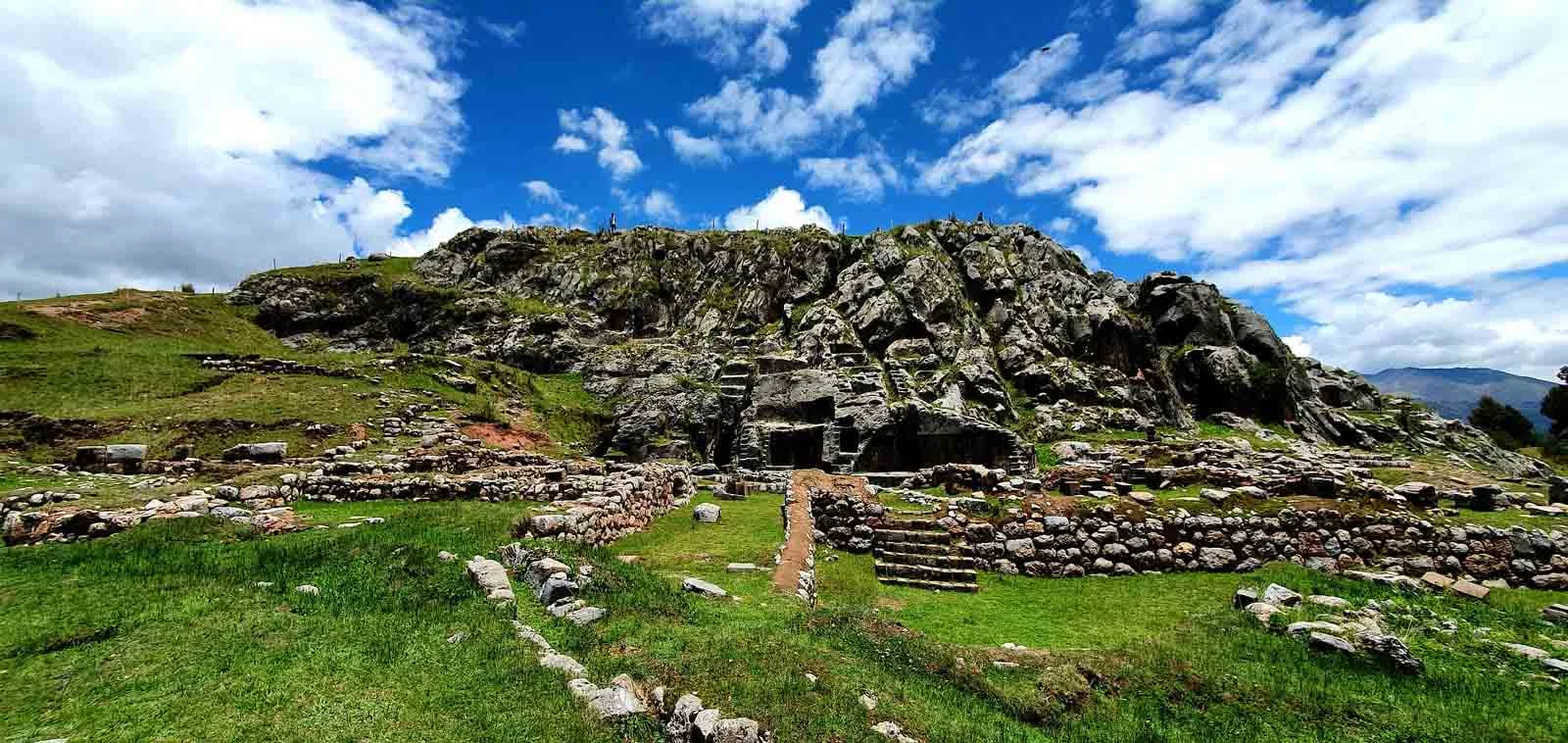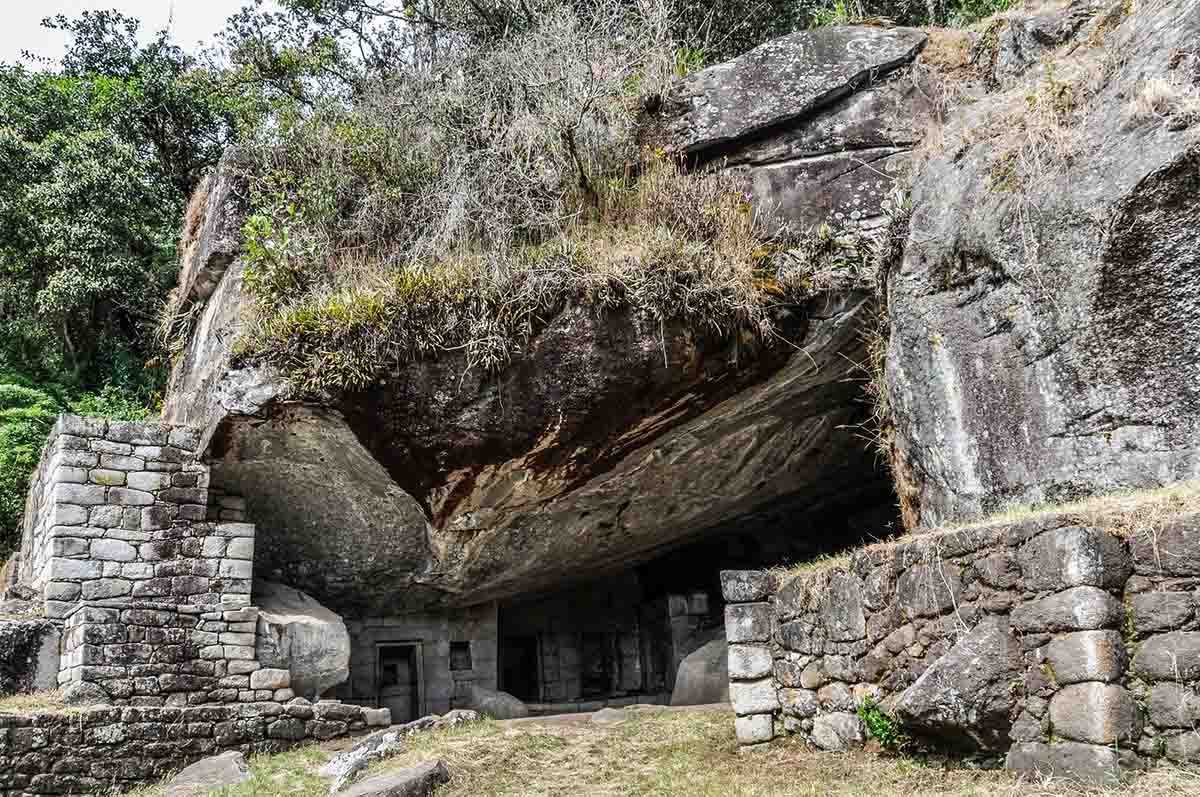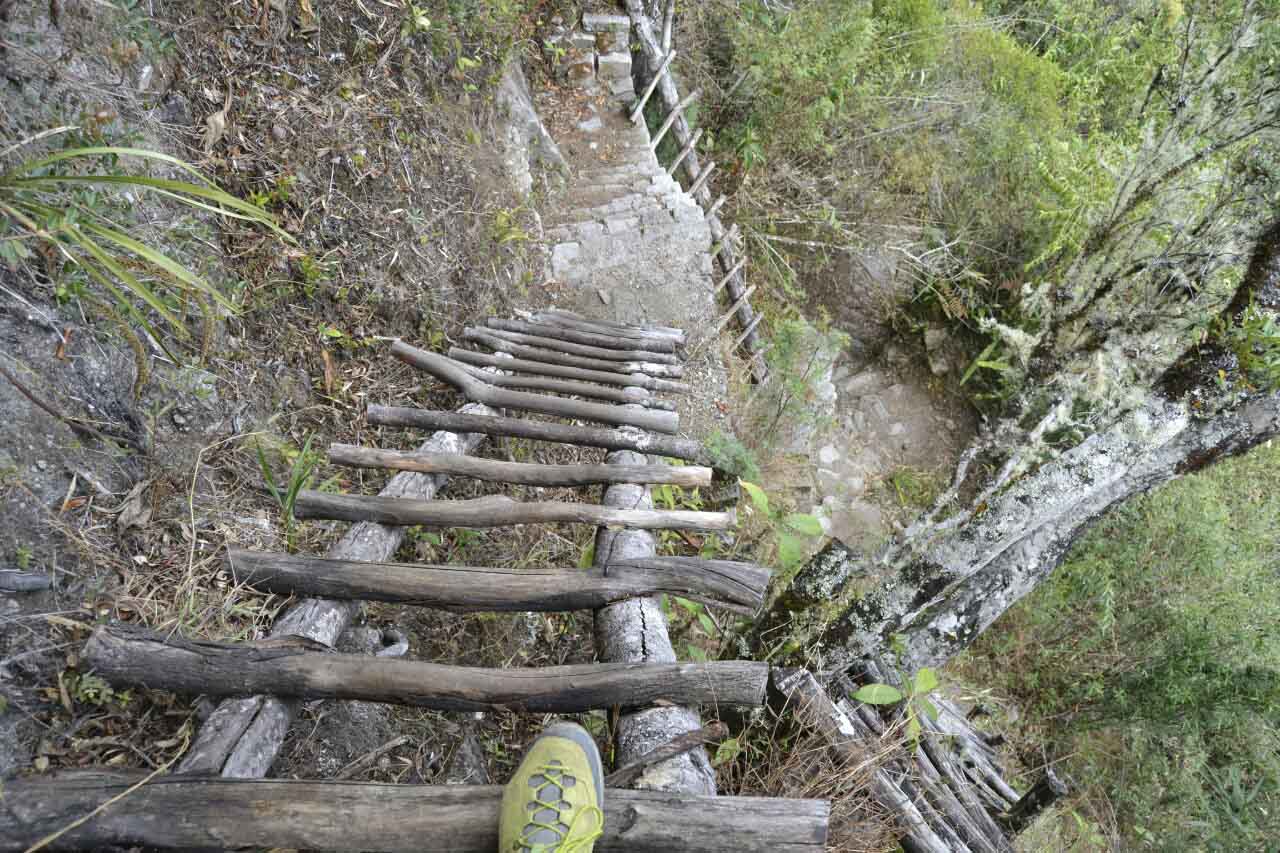
Temple of the Moon: A Machu Picchu Gem | Travel Blog
Table of content
What Is the Temple of the Moon?
The Temple of the Moon sits on the northern slope of Huayna Picchu mountain, just 390 meters below the summit. Furthermore when we talk about this temple, we're talking about a great cave. Builders carved a fine cave and built a temple using the mountain and rock as main elements. Moreover this temple has something very special, and surely thought out on purpose.
Specifically, this fact is that during the June solstice, it faces exactly where the sun sets over San Miguel Hill. This detail is very important in terms of the ceremonial and religious aspect of the Temple. Additionally, being inside Huayna Picchu Mountain is of great religious significance.
Remember that the Intihuatana is the only site ranked higher than the Temple of the Moon. Also the water that flows through the cave is in some ways an important part of its significance as a ceremonial temple of fertility.
Why Visit the Temple of the Moon?

The Temple of the Moon shows Inca building skills and beliefs. It sits away from busy tourist paths. This quiet spot lets you think and connect with nature.
You need this to grasp Machu Picchu's sacred meaning. The calm here creates a personal visit. You can soak up the magical feel around you.
The walk to the temple brings its own rewards. Along the way, you'll see amazing views and feel proud when you reach this hidden place. The hike tests your body but feeds your spirit too. It copies the trips the Incas made long ago.
When you visit the Temple of the Moon, you learn about the past. At the same time, you build your own bond with this old culture experience. You'll take home memories that stay with you forever.
Planning Your Visit
Best Time to Visit
To really enjoy the Temple of the Moon, visit during the dry season. It runs from May to October. The weather stays steady and inca trails are less muddy.
As a result, hiking becomes safer and more fun. During these months, skies are often clear.
You get great views of nearby mountains and valleys. You can get tickets for the train to Machu Picchu easier than the rest of the months.
Additionally, the dry season also means fewer bugs and steady heat. You can focus on beauty and history instead of weather problems. You need some time to plan and get the tour package suited for you.
Visiting in April and November can also work well. During these months, crowds are smaller and land is green from recent rains. But if you visit during the rainy season, be ready for quick showers and slippery trails.
No matter when you visit, start your hike early in the morning. This strategy helps you avoid midday heat and enjoy temple peace before crowds come.
Getting There
Getting to the Temple of the Moon needs some planning. You'll need a ticket to the top of Huayna Picchu. Keep in mind that only 400 people can visit each day.
Therefore, book these tickets early since they sell out fast. Once at Machu Picchu, follow the trail up Huayna Picchu. Then, branch off to the temple.
The path has clear signs but can be steep and hard. Take your time and enjoy the trip.
The hike to the Temple of the Moon is not easy. The trail has narrow paths and steep climbs. You need good fitness and care. Still the work pays off.
Each step brings you closer to one of the most sacred temples here. As you climb, you get great views of Machu Picchu and the land around it. This gives you a unique look at this old wonder.
The Hike

The hike to the Temple of the Moon is hard but worth it. It takes about two hours both ways. This time depends on how fast you go and if you plan to go to the top of the mountain itself. The inca trail is steep and can be slippery.
So, wear strong hiking boots and bring lots of water. As you go up, stop to take in great views of the Andes and Urubamba River below. The trip is as much about the walk as reaching the temple. It gives you moments to think and wonder at every turn.
Along the way, you'll see many plants and animals. This adds richness to your trip. Look for orchids and air plants. You might see llamas or birds too.
Meanwhile, nature sounds go with you as you climb. This makes you feel more connected to the land. Remember to go at your own speed and rest when needed.
Finally, the temple will wait for you. The trip is part of the reward.
Cultural Insights

Spiritual Significance
The Temple of the Moon was likely used for ceremonies and gifts to gods by the Inca culture. Its cave's natural shape and smart location suggest it honored the moon. The moon was a key god in Inca beliefs.
Knowing this spiritual background adds depth to your visit. It lets you see the Inca's deep connection to sky bodies. In fact, the moon, with its cycles and phases, meant fertility, renewal, and time passing. It played a big role in farming and religious life.
As you explore the archaeological site, think about its location and design in Inca beliefs. The temple's direction and alignment with sky events show the Incas knew astronomy well. The smart placement of niches and altars suggests rituals here matched lunar phases.
This made them more spiritually powerful. By learning these cultural insights, you gain greater respect for the Inca worldview. You see how they matched their lives with universe rhythms.
The architectural design clearly reflects the Andean worldview. They believed life and death as dualities that always existed in everything surrounding their mysticism. Gods like the sun, the moon, and lightning represented different aspects of existence in the Inca Empire.
Architectural Marvel
The temple's building shows Inca skill. For example, the perfect stone cuts and use of natural rock shapes highlight their advanced building abilities. Notice how the niches line up perfectly to catch light during specific times of year.
This detail reflects the Inca's knowledge of the sky and cosmology. This building mastery is not only useful but also deeply symbolic. In fact, it strengthens the spiritual meaning of the site.
The use of natural rock shapes in the temple's design shows the Incas' belief in working with nature, not against it. The smooth, seamless mix of carved stone and natural great cavern walls creates a harmonious and amazing space.
As you explore the temple, notice the attention to detail in the building. From the precision of stone joints to the careful alignment of structures with sky events. These building parts reflect the Incas' belief that all things connect. In this way they wanted to create spaces that honored both earthly and divine.

Photography Tips
You have the perfect postcard to frame in a photograph of the mountains, the river, and the Inca architecture. So seize the moment. Let me tell you one thing, you don't need a lot of equipment.
Simply take the best angle that includes elements of the entire landscape, and that's it. You can take photos of the Temple of the Sun, the Intihuatana, the great plaza and enjoy the unique opportunity to immortalize your visit to this sacred place.

Respecting the Site
Machu Picchu and all its temples have been declared a World Heritage Site by UNESCO. To help ensure this continues, we offer some recommendations: Do not touch the carved stones; the oils from your skin damage the rock.
Moreover, avoid leaving organic and inorganic waste. Together, let's help preserve this magnificent legacy for future generations; in other words, let's support the preservation of the great Inca culture. Approaching it with respect improves your own experience and honors the legacy of Inca culture.
A good piece of advice is to always listen to the Cusco site authorities. Use the information in the tables of contents at the entrance of the temple and other nearby temples. By taking these instructions into account, you're more than ready to enjoy the site without impacting or affecting this precious space in Peru. It's time to show gratitude for what the Incas left behind by respecting and protecting their work.
Uncovering the Mysteries of Machu Picchu’s Hidden Treasure
The Temple of the Moon, like the rest of the temples in the citadel of Machu Picchu. Forms part of the important legacy left to us by the Incas. Here, we can discover different perspectives on the life of the Inca people and their perspectives on things. For example we can understand the Andean trilogy that speaks of the world of the dead, the earthly world, and the upper ethereal world.
This temple is simply another link to the spiritual world of the Incas. Since their ancestors valued communication and celebration of those who passed away, and some of these customs still live on in the communities today. Therefore visitors will be grateful to learn a little about this great culture.
Check Our Suggested Tours:
- Peru By Belmond Tour
- Following the Path to the Sacred Sun Gate
- Honeymoon In Peru - Peru Honeymoon Packages
- From the Heart of the Jungle to the Sacred Mountain: A Luxury Expedition Through the Amazon & Ausangate 16d/15n
- The Soul of Two Worlds: A Grand Amazon & Andes Expedition 14d/13n
- Family Adventure Tour


